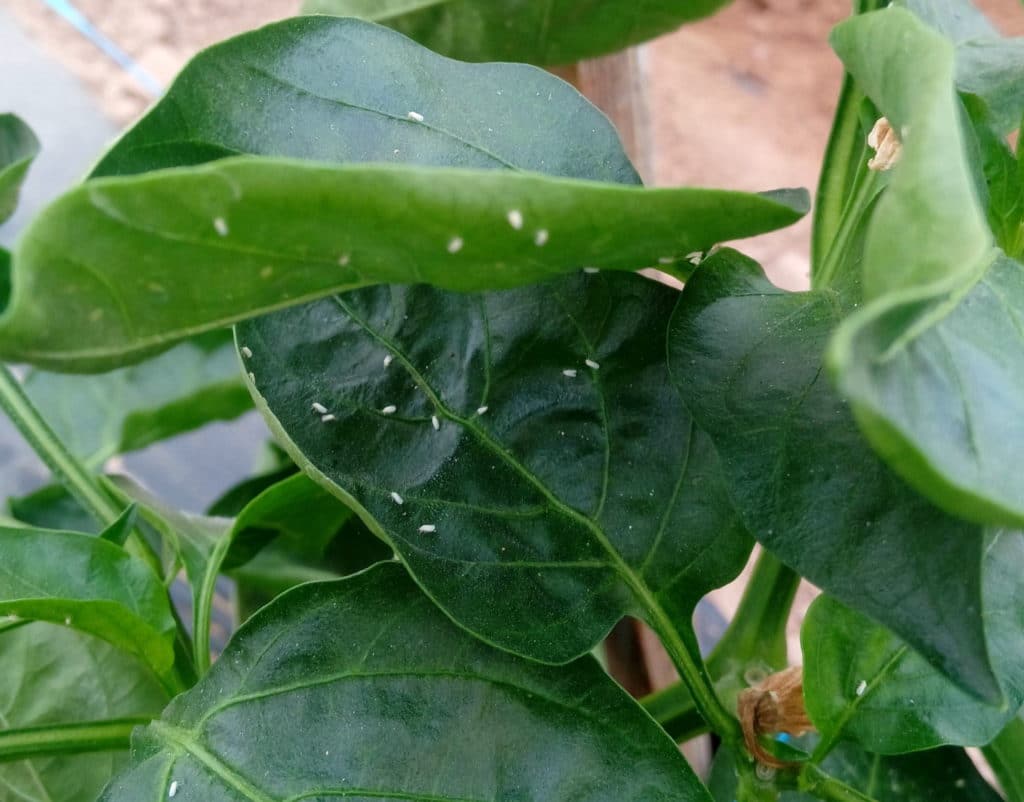Ficus trees and hedges serve multiple purposes for homeowners. Not only do they offer beautiful landscaping but they can also serve as a privacy barrier as well as provide shade. Their use in this manner is greatly compromised however when they fall victim to a whitefly infestation. These infestations often go undetected until the ficus begins showing the damage these particular insects cause. In many cases, homeowners may actually believe their plants are dead, but with the right treatment and care the plants can make a full recovery.
What Exactly Are Whiteflies?
Whiteflies are, in fact, not flies at all but are a species more closely related to the aphid and mealybug. There are many different species of whitefly but the one that most commonly affects South Florida residents is the Ficus species. These insects do have wings and can fly but spend the majority of their time feeding off the underside of ficus leaves. The whitefly gets its name from its white, powdery, moth-like appearance. Whiteflies can seriously injure host plants by sucking juices from them causing wilting, yellowing, stunting, leaf drop, or even death.

Identifying Whitefly
Whiteflies look like tiny white triangles, less than a one-tenth inch long, and have soft bodies. They are typically found on the undersides of plants where they concentrate their feeding. If the whiteflies have been feeding for several days, the leaves may have a sticky substance called honeydew. The presence of honeydew attracts ants which can present another undesirable pest issue. When you shake the leaves, the whiteflies will disperse and fly. Unfortunately, the whitefly typically goes undetected until it has caused visible damage to a host plant which is what alerts the homeowner of its presence. By the time this occurs a strong population has probably established itself and makes it quite difficult to eradicate through self-help measures.

Life Cycle of a White Fly
Whiteflies develop rapidly in warm weather, and South Florida populations can build up quickly where natural enemies are ineffective and the weather favors outbreaks. A female may lay 200 to 400 eggs without moving from a plant. There are four stages in the life cycle in which the first three are nearly invisible to see with the naked eye as they are so small and almost translucent in color. Upon hatching, the pupae crawl to a spot on the plant where they insert their sharp jaws and begin sucking. Feeding continues for up to three weeks when nymphs pupate into adults. Frequently problems are not noticed until a 30-day generation has passed, and a population has successfully established itself.
Natural Whitefly Predators
Spiders may not be welcome guests to many homeowners but they do help deter an explosion of whitefly pests by feeding on them. Other natural enemies of the whitefly include the Lacewing, ladybug, big-eyed bugs, and minute pirate bugs. It is important to treat your whitefly infestation with the objective of protecting the natural enemies as they will continue to help maintain the healthiest approach to the environment and keeping your ficus plants thriving.
DIY Whitefly Treatments
There are several DIY treatments that can be effective in removing whitefly from your ficus trees and hedges. One of the most important steps in doing this entails a commitment of time and consistency in treating your plants. The following are some possible options:
- Spray plants with insecticidal soap paying attention to the underside of the leaves. Follow up two or three times to take down a high population then periodically as needed.
- Spray plants with a strong blast of water to knock whiteflies off the leaves. Spray the bottom of each leaf since whiteflies tend to congregate and lay their eggs there.
- Some garden and hardware stores sell yellow sticky traps, which may be useful in monitoring and trapping adult whiteflies.
- A homemade mixture from the Old Farmers’ Almanac to control and deter whiteflies: In a 32-ounce spray bottle mix 2 parts rubbing alcohol, 5 parts water, and 1 tablespoon liquid soap. Spray the mixture on the foliage of garden plants that are susceptible to these pests.
- In the case of heavy infestation, prune the most affected branches and leaves, then dispose of them. Make sure to put them in a bag and close it properly and/or burn the affected leaves to avoid the spreading of the whitefly.
- Plant marigolds around those plants that are susceptible to whitefly infestation. Marigold (not pot marigold or calendulas) is a plant that tends to repel whiteflies.
- Vacuum-infested leaves in the early morning or evening with a hand-held vacuum cleaner. This will remove both adult and baby whiteflies.
- Coat the plants’ leaves and stems thoroughly with neem oil. You must cover the entire plant, including the bottoms of leaves, with the oil for it to work as intended. It reduces insect feeding causing starvation and acts as a repellent.
When to Call a Professional Pest Control Service
When you don’t have the time or inclination to implement the needed procedures to safeguard your landscape plants and gardens from whitefly, consider calling a professional control Company such as Gregory’s Pest Control and let them do the work for you. Some of the benefits of using a professional whitefly treatment service are:
- Less Pesticide used – A professional will only use toxins when necessary and will know the proper amount and usage of these toxins if needed. Many DIY homeowners may use too many toxins which cause more problems than they actually solve by killing helpful insects and introducing too many poisons into the environment.
- Less Illness – The use of pesticides could harm you or your family or even a pet. A professional will know how to take care of the issue in a safe and effective manner.
- Save Money – Some pests, like whitefly, are extremely resistant to some pesticides. Instead of wasting money on ineffective and poisonous toxins that may do more harm than good; a professional will know the safest and most effective method in eliminating the pest problem.
- Save you time – Doing it yourself can be frustrating and very time-consuming. Rather than spend a lot of time and money on attempts that may fail to resolve the issue leave the work to a locally owned company that will solve your issues and help educate you about the process along the way.
Gregory’s Pest Control is a company that provides the highest quality of customer service available and prioritizes meeting the needs of each of its customers. Consider a company such as theirs in your local area to help you address any whitefly issues you may have.

Paul Gregory
Owner/President of Gregory’s Pest Control
I’m a 2nd generation pest control owner who started working for my father in 1999. I was raised in South Florida and feel blessed to call it home for my entire adult life. As a long-term Florida resident, I recognize the challenges of controlling the many different pests that thrive in our subtropical climate. In particular, I understand how difficult it can be to prevent pests from invading our homes and businesses. By helping families solve their pest problems so they can live safer, more comfortable lives, I feel I am also meeting my family’s commitment to help our community. When I’m not out fighting pests, you can find me on the golf course or out on a soccer field where I have been fortunate enough to coach soccer to kids of all ages for the past 20 years.





